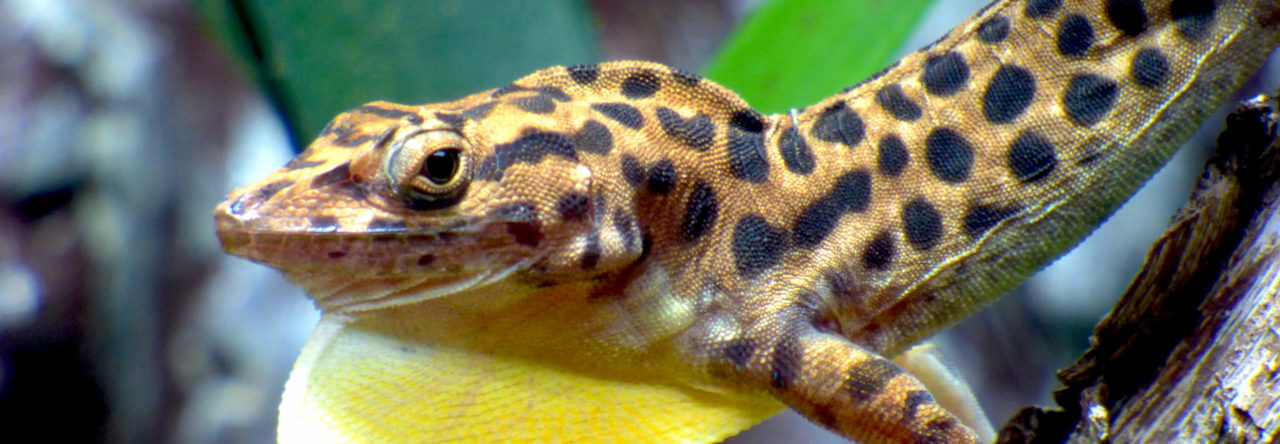I come to you, anologists of the world, with a request for your photos of anole dewlaps. I’m planning a study of dewlap size evolution across the Anolis phylogeny, but there’s not much data available for many of the less common species. I know many anole-hunters take pictures of their quarry with dewlaps extended after catching them, so I thought I’d try to extract data (e.g. dewlap length and area) from a collection of photos. If you have photos you might be able to share, please read on, and feel free to contact me if you have questions.
Requirements:
-The photo should show a live, adult male caught in the wild. Its dewlap should be fully extended – ideally either of its own volition or with tweezers, but fingers are ok as long as at least 90% of the dewlap area is visible.
-The anole’s entire head should be in the photo (so I can scale dewlap size relative to head size). If there’s a ruler or object of known length in the photo that’s even better.
-The photo should be close to a side-view profile (give or take no more than about 10 degrees angle in any direction).
-At a minimum, identify the species and the approximate location (country or island). Please do include any extra information you can share (e.g. date, latitude/longitude/altitude, snout-vent length of anole, weather…), but I know this may not be available for all the photos.
 Clearly I’m new to this – any photo better than this one should be useable.
Clearly I’m new to this – any photo better than this one should be useable.
Check out the comments section of this post for some better examples.
If you have one or more suitable photos you can contribute, please send them to me as an attachment to an e-mail. If you have large files or many photos (more than ~5MB) that may not make it through e-mail servers, drop me a line and I’ll send you a link to a Dropbox folder instead. If you are willing to give permission to use the photo (with full credit, of course) in potential blog posts, web pages (e.g. Encyclopedia of Life entries), or publications, please say so in the e-mail; otherwise I will only use the photos to extract basic measurements.











